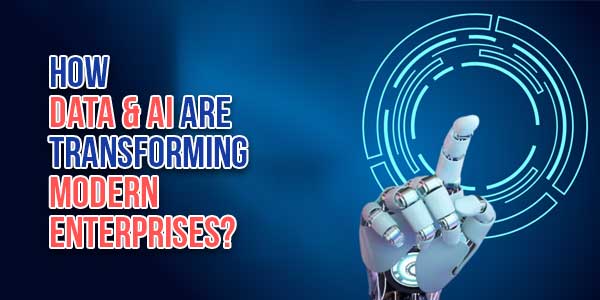
We all hear how critical data is for businesses to reach their goals and increase revenue. As a result, organizations worldwide have come to recognize data as a transformative force enabling real business advantage.
Let me introduce you to an interesting fact—it is expected that by 2025, we will be producing approximately 463 exabytes of data every day worldwide, and for the fun part— it is equivalent to 212,765,957 DVDs per day! This brings immense opportunities for businesses to enhance their processes and make informed decisions. But how exactly can this data help them achieve their business goals?
Here, enter data engineering services with AI technology as a fueling agent, learning patterns, identifying trends, and making predictions. AI analyzes and interprets data, helping businesses gain insights and making it easy for them to make decisions that are more likely to succeed.
Table of Contents
Why is AI in Data Analysis Necessary to Shape Modern Businesses?
Extracting, managing, and processing a vast amount of data manually is impossible. Moreover, that data, in essence, has to “learn” and improve over time to produce more accurate results.
There are many ways to recognize the benefits of AI in data analytics, such as:
- Identifying different data types
- Establishing relationships among datasets
- Extracting insights using Natural Language Processing (NLP)
- Automating and accelerating data preparation
- Generating predictive data models
- Enabling effective data exploration
Therefore, enterprises are widely using AI’s ability to process vast quantities of data to drive digital transformation, handling their processes efficiently as well as serving customers better than before.
The Role of Data and AI in Enterprise Digital Transformation:
1.) High Automation:
Automation is one of the primary requirements of modern enterprises that is being fulfilled by AI strategy consulting. AI and ML algorithms are used to extract information from data, detect patterns, and forecast outcomes without much human intervention. This is done through pre-defined rule-based systems, which streamline data analysis and automate tasks that were previously accomplished manually— thus enhancing efficiency.
2.) Handling Complex and Unstructured Data:
You will not always receive well-recognized and categorized data from the success. It can be complex and unstructured, and the blend of everything— text, images, audio, and video. Therefore, AI algorithms with deep learning techniques like CNN and NLP models are needed to process such data efficiently, providing insights that traditional methods might overlook.
3.) Adaptability and Continuous Learning:
With new data gathered and utilized in enterprise processes, it is important to continuously learn and adapt accordingly. And AI algorithms can really help with it by ingesting and analyzing vast amounts of data while improving their predictive capabilities. Overall, ML models ensure accurate and relevant predictions with evolving trends, helping organizations stay up-to-date with the latest trends.

4.) Data Collection and Cleansing:
AI can be trained with various types of data, including sales generated, web analytics, and product tracking, and also automate the process of data collection and preparation. This significantly improves the efficiency as well as the accuracy of the result since it eliminates human error and tedious manual processes.
5.) Data Analysis:
With organized and prepared data, AI models can effectively analyze and generate insights. It can quickly and easily identify patterns, correlations, and anomalies. Therefore, the analytics tasks would take data analysts days or weeks to complete manually.
Note: AI learning from training data can face biases that can hinder the quality of the results.
6.) Data Visualization:
Apart from interpreting data, one of the key elements is presenting that data in a format that is easy to understand. BI tools enhanced with AI capabilities can be used to create interactive dashboards containing charts and graphs that make it easy to explore that data.
Moreover, the advent of Generative AI technology has further enhanced this process needed to streamline the processes of modern enterprises.
7.) Predictive Analytics:
AI-driven predictive analytics that uses historical data can predict future-oriented trends and outcomes. It uses advanced ML algorithms to forecast what might happen based on past information, outperforming traditional business analytics in forecasting.
This can be used in various sectors of an organization, such as:
- Finding out inventory needs
- Setting reasonable sales targets
- Preparing for seasonal sales
- Assessing risks
8.) Data-driven Decision Making:
One of the best and most crucial roles of AI and data is helping organizations make well-informed and fast decisions since it provides better insights. Moreover, with intelligent predictive analytics, organizations can predict outcomes, avoiding potential issues before they can even occur. Hence improving operations and strategic planning.
Conclusion:
With professional AI strategy consulting services, implementing advanced AI data analysis tools can automate processes while managing complex and unstructured data. Moreover, the continuous learning from new information ensures the enterprise processes remain updated on what new is going on in the market.
Therefore, from efficient processes to data-driven decisions, AI in data analysis is needed for the digital transformation of an organization and taking it to new heights.

 About the Author:
About the Author:
















Be the first to write a comment.